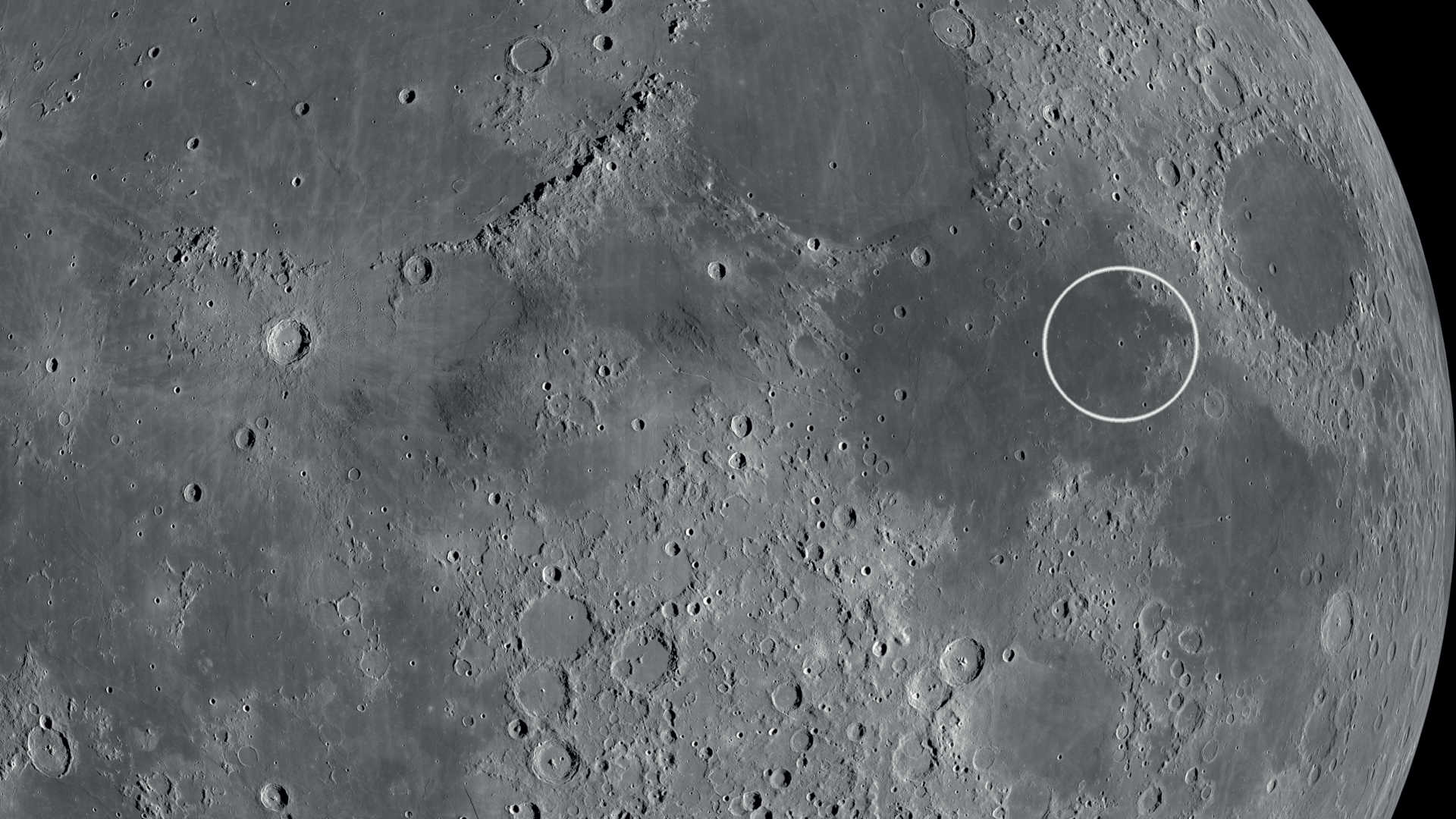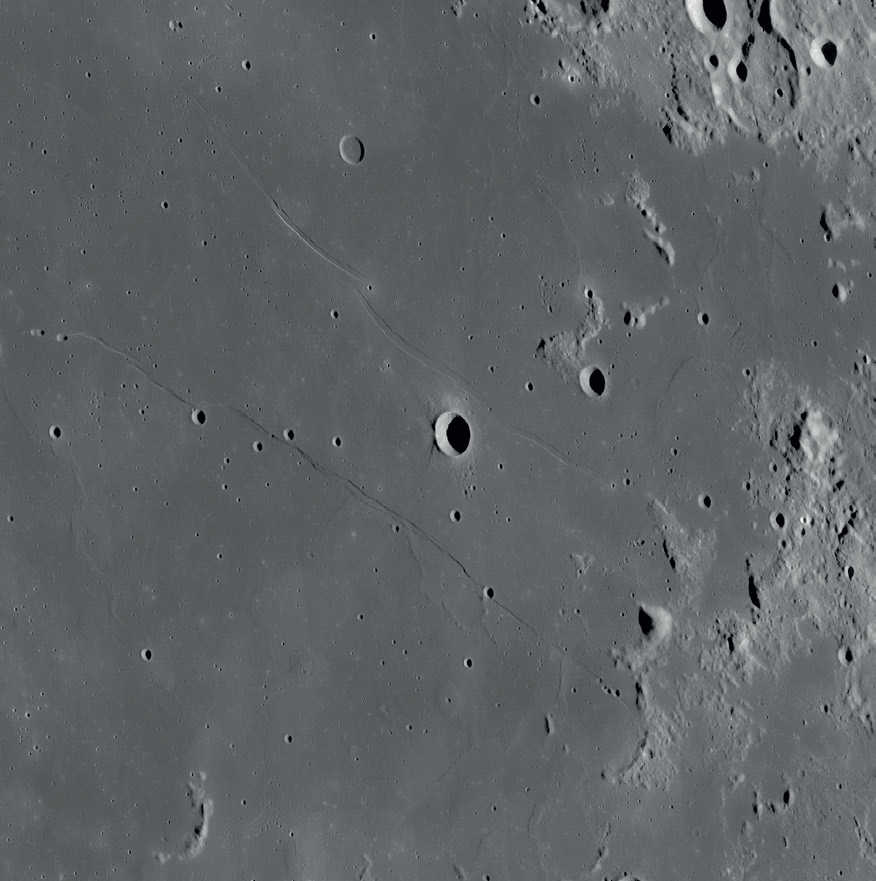Rima and Rupes Cauchy – two's better than one
Four days after New Moon, the lunar observer will find a magnificent, symmetrical figure in the Sea of Tranquility.
 Rima and Rupes Cauchy are located on the east side of Mare Tranquillitatis. NASA/GSFC/Arizona State University
Rima and Rupes Cauchy are located on the east side of Mare Tranquillitatis. NASA/GSFC/Arizona State UniversityWhen the Moon is four days old, the lunar observer will find a special attraction in the region of Mare Tranquillitatis (Sea of Tranquility) – and not just one attraction but two: Rima Cauchy (Cauchy rille) and Rupes Cauchy (Cauchy scarp).
Magnificently framed
 The two lunar domes Omega Cauchy and Tau Cauchy lie around 50 km south of Rupes Cauchy. NASA/GSFC/Arizona State University
The two lunar domes Omega Cauchy and Tau Cauchy lie around 50 km south of Rupes Cauchy. NASA/GSFC/Arizona State UniversityThe starting point of today's moonwalk is crater Cauchy – a typical representative of its kind with an intact and sharply delineated wall. The crater, which is just 12 km in diameter, is easily identified on the eastern side of the plains of Mare Tranquillitatis. Two interesting formations surround the crater to the north and south: Rima Cauchy, a rille about 140 km long, and Rupes Cauchy, a fault line of 140 km in length. Both formations are easily recognisable close to the terminator, even through a telescope with a small aperture.
The sight is truly magnificent, as the two structures form a roughly symmetrical shape comprising two narrow lines, which bend gently toward crater Cauchy. At sunrise, the slope of Rupes Cauchy appears as a black shadow, whereas at sunset it is brightly lit.
Volcanic challenge
When the Sun is at a shallow angle, it is also a good time to try to observe two more difficult targets: the lunar domes Omega Cauchy and Tau Cauchy. The two shield volcanoes are less than 200 m tall and therefore appear two-dimensional only when they are close to the terminator. An even greater challenge is the melodious-sounding Donna, a just 2 km wide summit crater of Omega Cauchy. The prerequisites for successfully observing Donna are really perfect conditions and an optically excellent telescope, allowing high magnifications.
Best visibility 4 or 17 days after New Moon
Author: Lambert Spix / Licence: Oculum-Verlag GmbH
